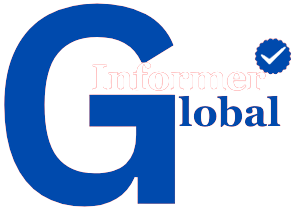Pay-Per-Click Advertising : Pros And Cons

In the digital marketing landscape, Pay-Per-Click (PPC) advertising stands out as a highly effective way to drive traffic and generate leads. Whether you’re a small business owner or a marketing professional, understanding how to leverage PPC can significantly boost your online presence. This detailed guide will walk you through the fundamentals, benefits, strategies, and best practices of Pay-Per-Click Advertising.
What is Pay-Per-Click Advertising?
Pay-Per-Click (PPC) advertising is a model of internet marketing in which advertisers pay a fee each time one of their ads is clicked. Essentially, it’s a way of buying visits to your site, rather than attempting to “earn” those visits organically. Search engines like Google and Bing, as well as social media platforms like Facebook and LinkedIn, offer PPC advertising options.
How Does Pay-Per-Click Advertising Work?
- Keyword Research: Identify relevant keywords that potential customers might use to search for your products or services.
- Creating Ads: Develop compelling ad copy that includes the selected keywords.
- Bidding: Set a maximum bid you’re willing to pay for each click on your ad. The actual cost per click (CPC) is determined through an auction process.
- Ad Placement: Ads are placed on search engine results pages (SERPs) or social media feeds based on the relevance and bid amount.
- Paying for Clicks: You pay the bid amount each time a user clicks on your ad, driving traffic to your website.
Benefits of Pay-Per-Click Advertising
- Immediate Results: Unlike SEO, which can take months to yield results, PPC ads can drive traffic almost instantly once the campaign is live.
- Targeted Advertising: PPC allows for precise targeting based on keywords, demographics, location, time of day, and more.
- Cost Control: Advertisers can set a budget for their campaigns and adjust it as needed, ensuring they only spend what they can afford.
- Measurable ROI: Pay-Per-Click Advertising platforms provide detailed analytics, making it easy to measure the return on investment (ROI) and adjust campaigns for better performance.
- Enhanced Brand Visibility: Even if users don’t click on your ad, appearing at the top of search results or in social media feeds can increase brand awareness.
Key Pay-Per-Click Advertising Platforms
- Google Ads: The most popular PPC platform, Google Ads, offers a vast network and extensive reach. It includes options like Search Ads, Display Ads, Shopping Ads, and Video Ads.
- Bing Ads: While it has a smaller audience compared to Google, Bing Ads can be less competitive and more cost-effective.
- Facebook Ads: This platform allows for highly targeted advertising based on user demographics, interests, and behaviors.
- LinkedIn Ads: Ideal for B2B marketing, LinkedIn Ads target professionals based on job titles, industries, and company size.
- Instagram Ads: Leveraging Facebook’s ad system, Instagram ads are effective for visually-driven marketing.

Strategies for Successful Pay-Per-Click Advertising Campaigns
- Conduct Thorough Keyword Research: Use tools like Google Keyword Planner, SEMrush, or Ahrefs to find relevant and high-converting keywords. Focus on a mix of short-tail and long-tail keywords to capture a broader audience.
- Craft Compelling Ad Copy: Your ad copy should be concise, relevant, and include a strong call to action (CTA). Highlight unique selling points and use keywords naturally.
- Optimize Landing Pages: Ensure that your landing pages are relevant to the ad, load quickly, and have a clear CTA. A well-optimized landing page improves the Quality Score and conversion rates.
- Set a Realistic Budget: Determine a budget that aligns with your goals and allows for sufficient testing. Start small and scale up as you see positive results.
- Use Ad Extensions: Enhance your ads with extensions like sitelinks, callouts, and structured snippets to provide additional information and increase click-through rates (CTR).
- Implement A/B Testing: Regularly test different ad variations, including headlines, ad copy, images, and CTAs. Use the results to refine and improve your campaigns.
- Monitor and Adjust Campaigns: Continuously monitor your campaign performance using analytics tools. Adjust bids, keywords, and ad copy based on the data to maximize ROI.
Common Pay-Per-Click Advertising Mistakes to Avoid
- Ignoring Negative Keywords: Not using negative keywords can lead to irrelevant clicks and wasted budget. Identify and exclude terms that don’t align with your target audience.
- Poor Ad Copy: Weak or irrelevant ad copy can result in low CTR and poor Quality Score. Make sure your copy is engaging and relevant to the keywords.
- Neglecting Mobile Optimization: With the increasing number of mobile users, ensure your ads and landing pages are optimized for mobile devices.
- Setting and Forgetting Campaigns: PPC campaigns require continuous monitoring and optimization. Regularly review performance and make necessary adjustments.
- Overlooking Conversion Tracking: Without proper conversion tracking, it’s challenging to measure the success of your campaigns. Set up conversion tracking to understand which ads and keywords are driving results.
Conclusion
Pay-Per-Click Advertising is a powerful tool that can drive immediate traffic, increase brand visibility, and generate leads for your business. By understanding the basics, leveraging the right platforms, implementing effective strategies, and avoiding common mistakes, you can maximize the impact of your PPC campaigns.















